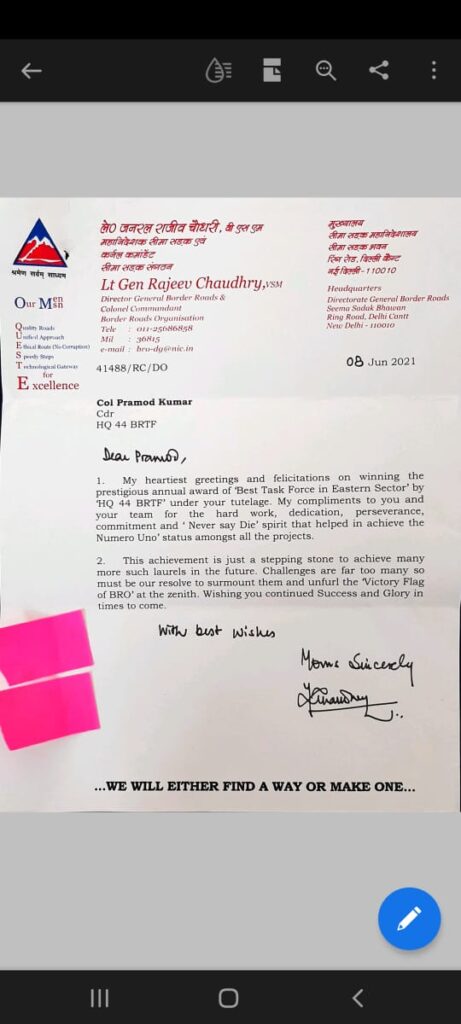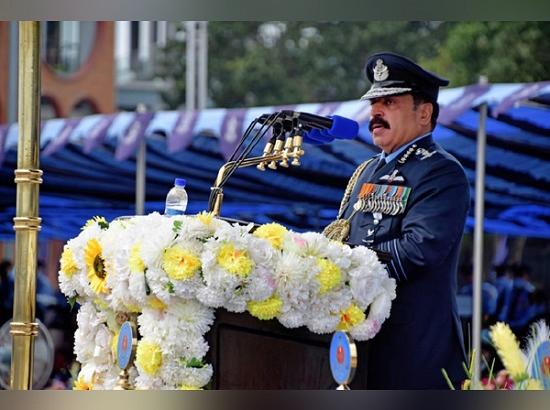
The drone attack on the Jammu airbase seriously escalates the threat of terrorism in Jammu and Kashmir from Pakistan. Earlier, drones from across the border have been used to drop weapons in Punjab for terrorist purposes. In those cases, the targets were not military. However, in the Jammu drone attack, the target was an Air Force base with the intention no doubt to cause serious material damage.
Even if this objective was not realised, the message that our air bases close to the Pakistan border are now vulnerable has been conveyed.
The drone used in the Jammu Air Force Station attack was a relatively less sophisticated one, but in future more potent drones with greater reach can be used. That will depend on the calculations of the Pakistani elements behind this escalation and how much they think they can get away with, as well as their assessment of the options available to New Delhi.
Because drones fly low, they escape detection by radars and interjection by air defence systems.
Drones have been used with deadly effect, for example, from Yemeni soil against the Saudi oil installations. They have also been used militarily with great success against the Armenians in Nagorno-Karabakh by Turkey-supported Azerbaijani forces. The Chinese have used drones for aerial surveillance in Ladakh during the current stand-off. The Americans have used armed drones in Afghanistan and in Iraq to eliminate terrorists, and even a high-ranking serving military officer as in the case of the Iranian General Qasem Soleimani.
Drone swarms are now part of the panoply of a country’s military arsenal. India too has acquired armed drones from the US for maritime security.
This new security challenge that has surfaced has to be effectively met. It is not possible for local Kashmiri elements to, without external help, get access to drones and get trained to operate them with explosive charges and target acquisition. An in-depth investigation is needed to determine the trajectory of the drone used in the Jammu Air Force Station attack and the source of the technical support needed for operating it. It can safely be assumed that Pakistani elements are behind this one way or another. It is well to recall the attack on the Pathankot air base in 2016 wherein the Jaish-e-Mohammed was involved. Judging from the manner in which Pakistan treated the Pathankot investigation, there is no doubt that it was carried out with the connivance of Pakistan-based ISI.
Ceasefire: A Win-Win For Both Sides
India has to carefully evaluate its options. According to our Army chief, the ceasefire along the Line of Control (LoC) has been holding well barring a minor infraction. He has acknowledged the absence of attempts by Pakistan to infiltrate terrorists with covering fire. The tenor of statements from the Indian side has been supple lately, suggesting that we see value in preserving the ceasefire, if for nothing else than protecting our civilian population from the firing across the LoC.
A ceasefire on our western border is also helpful in fully concentrating on the military stand-off with China on our northern border. For Pakistan, putting a stop to punishing fire from the Indian side would be a consideration, besides the need to concentrate on the developments on its border with Afghanistan. Pakistan may also be calculating that for it to exit from the Financial Action Task Force or FATF grey list a ceasefire with India and curbing terrorist infiltration would add to its credibility in making the case that it was seriously addressing the FATF concerns.
Pakistan’s Malevolence: A Permanent Feature
On the other hand, the anti-India political rhetoric from Pakistan has not significantly abated. In his recent interview with The New York Times, Imran Khan projected himself as someone who is loved and respected in India, a peace-maker looking for a civilised trade relationship with New Delhi. Durign the interview, he hit hit against Prime Minister Narendra Modi’s RSS ideology.
Khan’s condition for a dialogue with India is a reversal of the 5 August, 2019, changes in Jammu and Kashmir. He is living in a fantasy world if he really believes what he says. If Khan thinks that this is the right propagandist line to take with the “liberal” US press, which is antipathetic towards Modi, he is exhibiting his lack of political maturity.
Pakistan’s foreign minister Shah Mahmood Qureshi has developed a new concept that the size of a diplomatic mission in a country depends on whether it is a neighbour or not. According to him, India, not being a neighbour of Afghanistan, has a larger presence in Afghanistan than what is necessary. He also alleged that India uses its presence in Afghanistan to promote terrorist activity against Pakistan.
Pakistan National Security Adviser Moeed Yusuf claims that Kashmir has never belonged to India and that after India inevitably reverses its 5 August, 2019, decisions, Pakistan will consider a dialogue with India. Pakistan seems to believe that India’s policy in Kashmir is failing, and that it can leverage opinion in the US administration against Indian actions in Jammu and Kashmir to its advantage. And this, even as its interventionist policy in Afghanistan is succeeding with the US consent.
It is not unlikely that Pakistan may have reasoned that with India embroiled with China in the north, the internal situation in Kashmir still unsettled, the cooperation of the old political class still needed to implement the post 5 August agenda of the Modi government, and the developments in Afghanistan which have compelled India to reach out to the Taliban contrary to long-standing policy ” no doubt to ward off concerns about an externally abetted revival of terrorist activity in Kashmir ” upping the ante on Kashmir was needed to put India on the defensive.
If India retaliated, it would be accused of violating the ceasefire and distracting Pakistan from constructively cooperating with the US to facilitate its withdrawal from Afghanistan. It will argue, as it has always done, that it is wrongly blamed by India for its own failures to control the insurgency in Kashmir.
Pakistan’s malevolence towards India remains a fundamental feature of its foreign policy.
It is most important that the result of India’s meticulous investigation of the drone attack is widely shared domestically and internationally. India could bring the incident to the attention of the Security Council of which it is currently a member. A clear warning should go to Pakistan that India reserves the right to react appropriately to such a dangerous provocation at a time of its own choosing.

























































 Photo Source: ANIIndian Air Chief becomes first foreign service head to review Bangladesh Air Force passing out paradeNew Delhi [India], June 29, 2021 (ANI): Signifying the strong bonds between India and Bangladesh, Indian Air Force chief RKS Bhadauria reviewed the Passing Out Parade and Commissioning Ceremony at Bangladesh Air Force Academy (BAFA) at Jashore in Bangladesh.This was the first instance when any foreign chief was invited to review the Parade as the Chief Guest, the Indian Air Force said. Bhadauria was invited by his Bangladeshi counterpart Air Marshal Shaikh Abdul Hannan to review the Passing Out Parade and Commissioning Ceremony at Bangladesh Air Force Academy (BAFA).The event was held in Jashore on Monday. The two-day visit was highly significant in view of the Golden Jubilee of the historic victory in 1971 War for Liberation of Bangladesh. While addressing the graduating trainees on parade, CAS complimented them for an excellent parade and noted the rapid progress being made in all aspects of military-level interactions, with bilateral defence cooperation having become an important pillar in the deep historical and fraternal ties between India and Bangladesh.The Indian air chief described this event as a reflection of the excellent state of professional relationship between the two Air Forces based on mutual trust and understanding. He expressed confidence that his presence in BAFA during this historic 50th year of Liberation War would reinforce the already strong and multi-dimensional partnership between the two Nations.During his stay in Bangladesh, the CAS held discussions with his host, the Chief of Air Staff Bangladesh Air Force as well as the Chief of Army Staff and Principal Staff Officer, Armed Forces Division, wherein matters of mutual interest and avenues to further strengthen the all-encompassing defence cooperation were discussed. He also interacted with the High Commissioner of India, Vikram K Doraiswami during his stay in Dhaka. (ANI)
Photo Source: ANIIndian Air Chief becomes first foreign service head to review Bangladesh Air Force passing out paradeNew Delhi [India], June 29, 2021 (ANI): Signifying the strong bonds between India and Bangladesh, Indian Air Force chief RKS Bhadauria reviewed the Passing Out Parade and Commissioning Ceremony at Bangladesh Air Force Academy (BAFA) at Jashore in Bangladesh.This was the first instance when any foreign chief was invited to review the Parade as the Chief Guest, the Indian Air Force said. Bhadauria was invited by his Bangladeshi counterpart Air Marshal Shaikh Abdul Hannan to review the Passing Out Parade and Commissioning Ceremony at Bangladesh Air Force Academy (BAFA).The event was held in Jashore on Monday. The two-day visit was highly significant in view of the Golden Jubilee of the historic victory in 1971 War for Liberation of Bangladesh. While addressing the graduating trainees on parade, CAS complimented them for an excellent parade and noted the rapid progress being made in all aspects of military-level interactions, with bilateral defence cooperation having become an important pillar in the deep historical and fraternal ties between India and Bangladesh.The Indian air chief described this event as a reflection of the excellent state of professional relationship between the two Air Forces based on mutual trust and understanding. He expressed confidence that his presence in BAFA during this historic 50th year of Liberation War would reinforce the already strong and multi-dimensional partnership between the two Nations.During his stay in Bangladesh, the CAS held discussions with his host, the Chief of Air Staff Bangladesh Air Force as well as the Chief of Army Staff and Principal Staff Officer, Armed Forces Division, wherein matters of mutual interest and avenues to further strengthen the all-encompassing defence cooperation were discussed. He also interacted with the High Commissioner of India, Vikram K Doraiswami during his stay in Dhaka. (ANI) 



























































